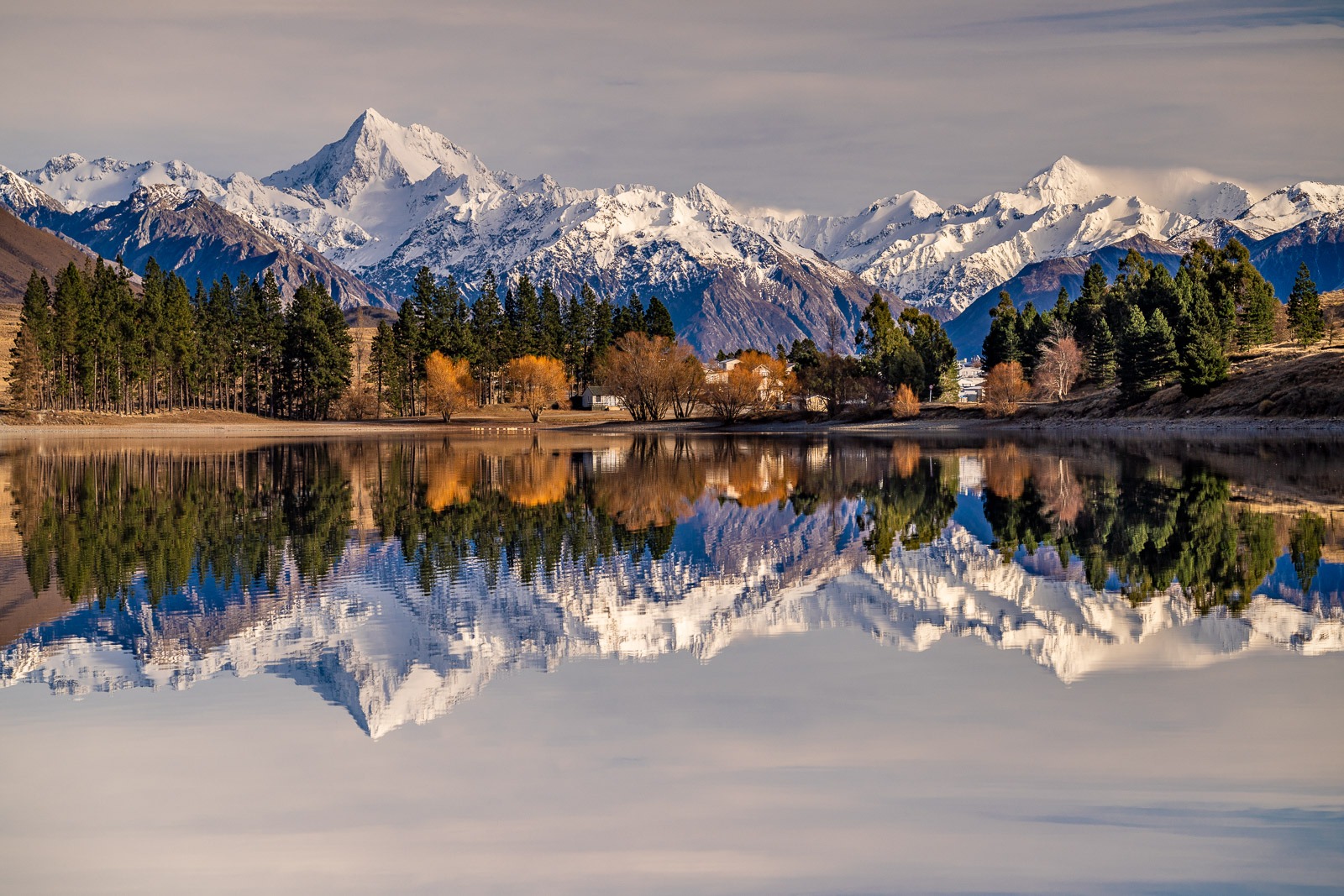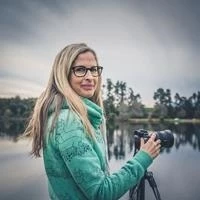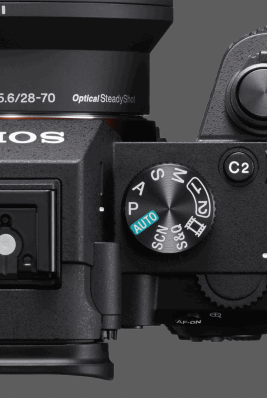Wanting to know the best lenses for landscape photography but don't know where to start? I'm here to help!
Landscape photography is a very broad genre which covers everything from wide, open scenes taking in even more than the field of view our eyes see (think 12-16mm focal lengths) right through to heavily compressed scenes that bring far away features much closer (think 100-300mm focal lengths). Images taken with both wide-angle and telephoto lenses qualify equally as landscape photography, and if you are serious about getting into this style of photography you'll want to think about having the ability to shoot at different focal lengths to change the composition to suit the scene. So let's get into the nitty gritty of how each type of lens will help you create amazing landscape images.

Wide-angle zoom lenses
Examples: 10-18mm (APS-C), 12-24mm, 16-35mm (full-frame)
Wide-angle lenses are great for incorporating a vast amount of the landscape into a scene. Our eyes see a field of view of approximately 35-50mm, so shooting wider than this gives a sense of how huge a landscape is, since if we were standing looking at the scene we would physically have to turn our head from side to side to take the same view in.
I'm a big fan of shooting with a wide-angle lens and until recently I would have said I used my 16-35mm lens 80% of the time. That's changed over the past few months as I've been challenging myself to see different compositions available at other focal lengths, but it's still a favourite to use. There are two types of shots that really suit a wide-angle lens - when you're looking at a grand landscape with many features and you want to be able to capture it all in one shot (and this is particularly true for astrophotography where you want to incorporate both a foreground as well as a lot of sky) OR when you're standing close to a scene and you need that extra width to be able to fit everything in. Here are some examples shot at 16mm:


You might ask why I don't shoot with a 12-24mm lens to get an even wider range of view. Most commonly 12-24mm lenses come with a fixed lens hood that can't be removed because the front lens element curvature is very prominent. This means I wouldn't be able to use my Kase Filters K9 kit, which is an essential part of my kit to enhance water scenes using a polariser and even out exposures during sunrise and sunset with a graduated filter.
Mid-range zoom lenses
Examples: 18-55mm (APS-C), 24-70mm (full-frame)
If as a photographer you had to choose just one lens, this should be your lens of choice. When I first started out in landscape photography I didn't own a mid-range zoom lens, but the more I use my Sony FE 24-70mm F2.8 GM lens the more I've discovered how versatile it is.
Not only do you have a reasonably wide angle of view (and you can create multiple stitched shots if you need to go wider than 24mm) but you can also crop significantly into a scene to change the composition. Here is an example of shots taken at either end of the focal range:


Another time that a 24-70mm lens is really useful is when taking a scenic flight such as this scenic flight with Glenorchy Air between Queenstown and Milford Sound. Often you are flying very close to the mountain peaks so you need the ability to shoot wide to fit these peaks in, whilst at other times you want to bring lakes and scenes far below or far away closer into view, which is when the 70mm focal length comes into its own.


Telephoto zoom lenses
Examples: 55-200mm, 70-350mm (APS-C), 70-200mm, 70-300mm, 100-400mm (full-frame)
The beauty of a telephoto lens is that you can bring far away scenes seemingly closer to you. It works great when you are shooting majestic mountain peaks that in reality are a long way away. Up until recently my Sony FE 70-300mm lens was only used 10% of the time, if that, but I've been forcing myself to use it much more often and have really grown to love the results, especially combined with the Alpha 7R IV 61MP camera body. The ability to zoom in to the very end of the focal range and still capture a sharp image has been impressive when I've used a tripod to ensure no camera shake occurs.
Here are some images taken with longer focal lengths which bring the mountains into close display at different focal lengths:



Another thing that telephoto lenses are useful for is to really accentuate the subject you are shooting by blurring the background. They also allow you to shoot quite discreetly from a distance. While these features aren't as important for landscapes, they can come in very handy for portraits, weddings and nature images like the ones below.


When to use different focal lengths
There's no right or wrong when it comes to which lens you should use in different situations. Ultimately you need to train your eye to know what you want to include in your scene, and that might mean changing your lens several times during a shoot at the same location. To illustrate this check out the different compositions that can all be found in one location at Lake Matheson using a wide-angle zoom lens right through to fairly deep crop using a telephoto zoom lens.

Each shot has its own appeal for different reasons - personally I prefer the shots taken at 70mm and 239mm in this instance. The 70mm length allows for reflections in the water which Lake Matheson is well-known for - while the 239mm length allows the mountain peaks to be the star of the show. The main thing is try different focal lengths rather than just shooting using the same lens all the time.
But what aperture should I buy? F2.8 vs F4
Lenses come with different maximum apertures. The lower the aperture number, the wider the diameter of the opening that let's the light through to the sensor. F2.8 zoom lenses are much more expensive than F4 zoom lenses because they contain larger glass elements - so they are bigger, heavier and pitched towards more professional photographers. I started out with a 16-35mm F4 lens and was very happy with its performance. It was only when I started capturing astrophotography scenes that I felt I needed a wider aperture for these very low light situations.
You should be able to expect a sharper performance from an F2.8 lens vs an F4 lens, but definitely read some reviews on the specific lenses you are comparing to see what real-world tests have proven at different focal lengths. A lower F2.8 aperture will also give you the ability to capture a shallower depth of field and deliver better bokeh, which looks great for other types of photography (like portraits) but may not be so important in landscapes where you usually want everything sharp in the image. I also know with the Sony zoom lenses in particular that the F2.8 GM versions produce much nicer looking sunstars with more spikes (like in the Nugget Point Lighthouse image above) due to the higher number of aperture blades.
Ultimately you have to weigh up both the cost and weight vs the extra benefits you will get from having a lower aperture, e.g. the Sony FE 16-35mm F2.8 GM lens is twice the price of the Sony FE 16-35mm F4 lens, and is slightly heavier, wider and longer. I certainly haven't regretted the upgrade.
What about prime lenses?
The lenses I've recommended are all zoom lenses with the ability to change focal length, but what about prime (i.e. fixed focal length) lenses for landscape photography? There's a certainly a case to be made for using a wide angle prime lens like the new Sony FE 20mm F1.8 or Sony FE 24mm F1.4 lenses for astrophotography, where you want to incorporate as much of the field of view in as possible AND gain the benefit of a large aperture for better low light performance. However, the downside of a prime lens is that you can't change your focal length without physically moving closer or further away from your subject, and sometimes that just isn't possible if you're standing on the edge of a lake!
So what should you buy first?
I hope that you've found this information useful to help you decide which lenses you should purchase for your landscape photography. If I had to pick just one, my lens of choice would be the 24-70mm lens because it covers a good range of situations, especially for travelling. That being said, you might be like me and love shooting wide open spaces most of the time and not feel the need for that extra reach. The more you shoot, the more you'll know what focal lengths suit your style and images best.
Happy lens hunting!











